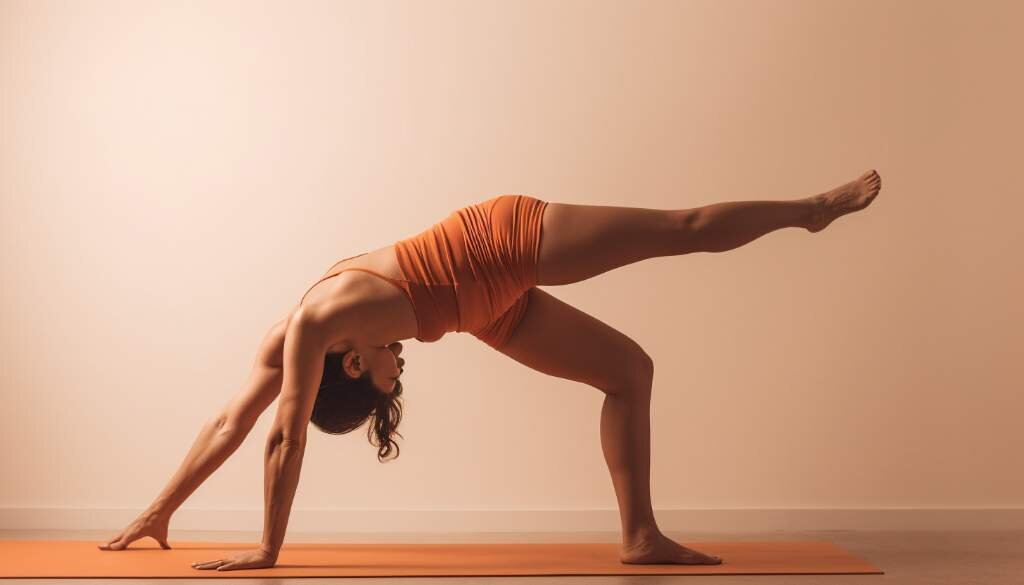
Understanding Osteoporosis
Osteoporosis is a medical condition characterized by a decrease in bone density and strength, leading to a higher risk of fractures. It is often referred to as the ‘silent disease' because it progresses without any noticeable symptoms until a bone fracture occurs. Understanding osteoporosis is crucial for individuals at risk as well as those who want to prevent it. In this section, we will explore the definition and prevalence of osteoporosis, the link between osteoporosis and exercise, the benefits of yoga for osteoporosis, yoga poses to avoid, safe alternatives and modifications, as well as precautions and tips for practicing yoga with osteoporosis.
Definition and Prevalence
Osteoporosis is a common bone disease characterized by low bone density and deterioration of bone tissue, leading to an increased risk of fractures. It affects millions of people worldwide, particularly postmenopausal women and older adults.
The Link between Osteoporosis and Exercise
Exercise plays a crucial role in managing and preventing osteoporosis. Regular physical activity can help improve bone health, increase bone density, and reduce the risk of fractures in individuals with osteoporosis. By understanding the link between osteoporosis and exercise, you can make informed choices about the type and intensity of your exercise routine to maximize its benefits.
Osteoporosis is a condition characterized by weakened bones that are more susceptible to fractures and breaks. It affects both men and women, with women being more prone to developing osteoporosis after menopause due to the decline in estrogen levels. The prevalence of osteoporosis increases with age, and it is estimated that over 200 million people worldwide are affected by this condition.
Exercise is known to have a positive impact on bone health by stimulating the production of new bone tissue and increasing bone density. Weight-bearing exercises and resistance training are particularly beneficial for individuals with osteoporosis. Weight-bearing exercises include activities that require you to be on your feet and support your body weight, such as walking, jogging, dancing, and stair climbing. These activities help to strengthen the bones in the legs, hips, and spine.
Resistance training, also known as strength training or weightlifting, involves using free weights or weight machines to work against resistance. This type of exercise helps to build muscle strength and improves bone density. Resistance training can be performed using dumbbells, barbells, resistance bands, or weight machines under the guidance of a qualified fitness professional.
In addition to weight-bearing exercises and resistance training, flexibility and balance exercises can also be beneficial for individuals with osteoporosis. These exercises help to improve joint mobility, prevent falls, and reduce the risk of fractures. Examples of flexibility exercises include yoga and stretching, while balance exercises can include activities like tai chi and standing on one leg.
When incorporating exercise into your routine, it is important to start slowly and gradually increase the intensity and duration of your workouts. It is advisable to consult with a healthcare professional or a certified exercise specialist who can provide guidance on appropriate exercises and modifications based on your individual needs and limitations.
Overall, regular exercise is a key component of managing osteoporosis. By understanding the link between osteoporosis and exercise, you can take proactive steps to improve your bone health, reduce the risk of fractures, and enhance your overall well-being.
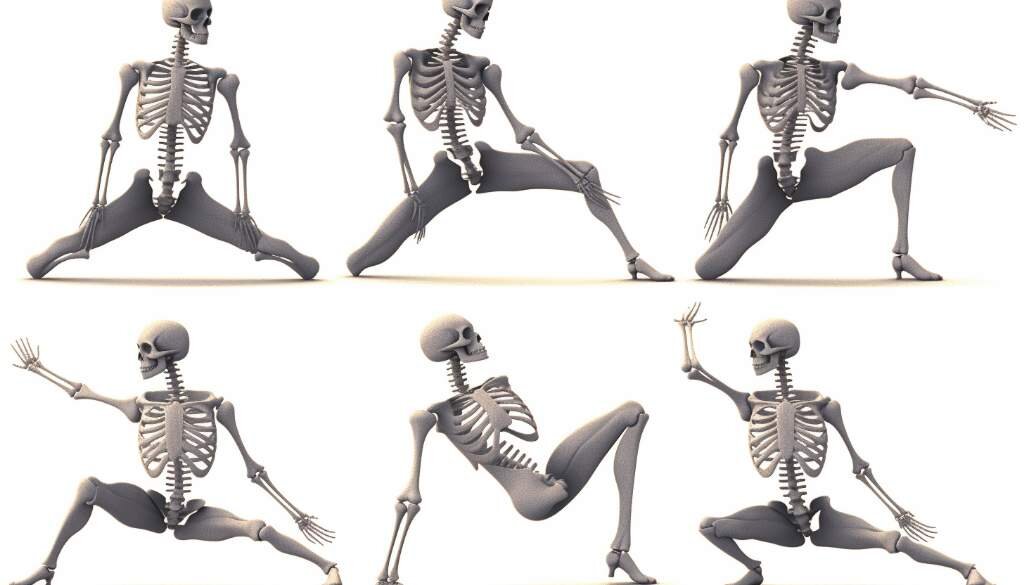
Benefits of Yoga for Osteoporosis
Yoga has been recognized as a beneficial practice for individuals with osteoporosis. Regular yoga practice can help improve bone strength, flexibility, balance, and overall well-being. By incorporating various yoga poses and movements, individuals with osteoporosis can experience numerous benefits that can positively impact their condition.
This section will explore the different aspects of yoga that contribute to its effectiveness in managing osteoporosis. We will provide an overview of yoga and its positive effects, as well as key poses that specifically target bone strengthening. Additionally, we will discuss the importance of caution when practicing yoga with osteoporosis and highlight high-risk poses to avoid.
By the end of this section, you will have a better understanding of the benefits that yoga can offer individuals with osteoporosis, and you will have the knowledge to safely incorporate yoga into your routine.
Overview of Yoga and Its Positive Effects
Yoga is widely recognized for its positive effects on overall health and well-being. When it comes to osteoporosis, incorporating yoga into a regular exercise routine can offer numerous benefits. This sub-section provides an overview of yoga and its positive effects on individuals with osteoporosis.
Yoga is a mind-body practice that combines physical postures, breathing exercises, and meditation. It is known to improve flexibility, strength, balance, and coordination, which are crucial for maintaining bone health and preventing fractures in individuals with osteoporosis.
One of the primary benefits of yoga for osteoporosis is its ability to counteract the effects of bone loss. Weight-bearing and resistance-based yoga poses stimulate the bones and muscles, promoting the production of new bone tissue. This can help increase bone density and reduce the risk of fractures.
Furthermore, yoga promotes better posture and body alignment, which can alleviate the strain on the spine and reduce the chances of vertebral fractures. Yoga also helps improve balance and stability, reducing the risk of falls and associated bone injuries.
Aside from its physical benefits, yoga also has positive effects on mental health. The practice helps reduce stress, anxiety, and depression, which are common in individuals with osteoporosis. It creates a sense of calmness and improves overall well-being, enhancing the quality of life for those living with the condition.
Regular yoga practice not only strengthens the bones but also enhances muscle strength and flexibility. This can improve joint function and range of motion, making everyday activities easier for individuals with osteoporosis.
In summary, yoga offers a wide range of positive effects for individuals with osteoporosis. It strengthens bones, improves balance and stability, promotes better posture, reduces stress, and enhances overall well-being. By incorporating yoga into their routine, individuals with osteoporosis can potentially improve their bone health and overall quality of life.
Key Poses for Strengthening Bones
When it comes to managing osteoporosis, incorporating specific yoga poses can be highly beneficial in strengthening bones and improving overall bone health. Yoga helps stimulate bone growth, prevent bone loss, and increase bone density, making it an ideal form of exercise for individuals with osteoporosis.
Here are some key poses that are particularly effective in strengthening bones:
- Tree Pose (Vrksasana):
- Triangle Pose (Trikonasana):
- Bridge Pose (Setu Bandha Sarvangasana):
- Warrior II Pose (Virabhadrasana II):
The tree pose is a standing balancing posture that requires you to balance on one leg while keeping the other foot pressed against the inner thigh of the standing leg. This pose helps improve balance, stability, and strengthens the leg bones, especially the ankles.
The triangle pose involves standing with your legs wide apart and reaching one hand down to touch the ground while extending the other arm upwards. This pose stretches and strengthens the legs, hips, and spine, helping to improve bone density in these areas.
The bridge pose is a backbend that involves lying flat on your back and lifting your hips off the ground, creating a bridge-like shape with your body. This pose strengthens the spine, hips, and thighs, promoting better bone health.
The warrior II pose is a standing pose that involves lunging forward with one leg and extending the arms out to the sides. This pose strengthens the legs, ankles, and hips, improving bone density and stability.
Remember to always practice these poses under the guidance of a qualified yoga instructor. It's essential to prioritize safety and listen to your body while performing these poses. Make sure to modify and adapt the poses according to your individual needs and limitations. Regular practice of these key poses, along with an overall yoga routine, can have a positive impact on bone health and help manage osteoporosis effectively.
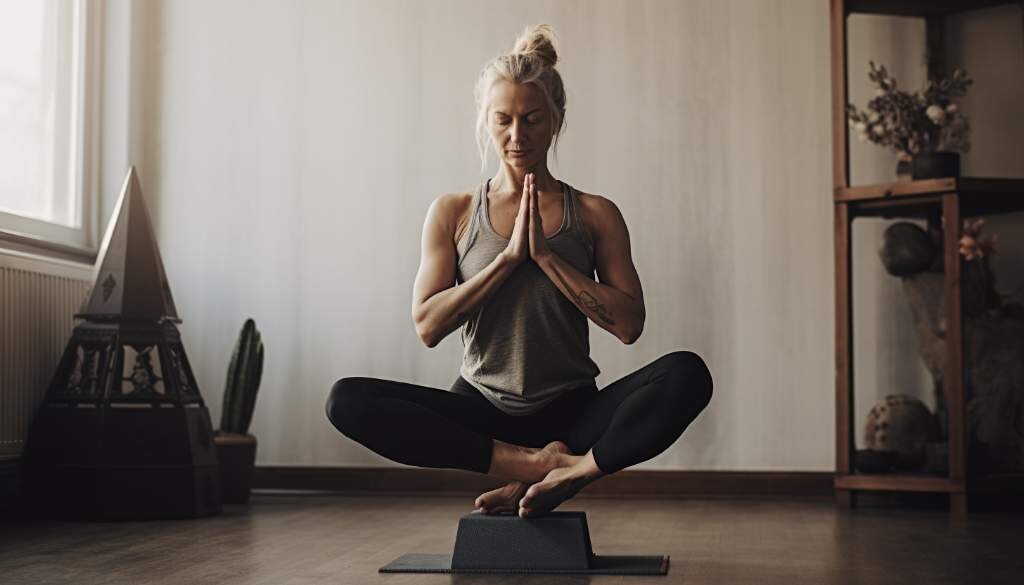
Yoga Poses to Avoid with Osteoporosis
When practicing yoga with osteoporosis, it is important to be mindful of certain poses that may pose a higher risk of injury or fracture. These are known as Yoga Poses to Avoid with Osteoporosis. Understanding which poses to avoid can help individuals with osteoporosis maintain a safe and beneficial yoga practice. In this section, we will explore the poses that should be approached with caution or avoided altogether to prevent potential harm.
Explanation of High-Risk Yoga Positions
High-risk yoga positions are poses that can increase the risk of injury or fracture for individuals with osteoporosis. These poses exert a significant amount of pressure on the bones, making them unsuitable for those with weakened bone density. It is crucial for individuals with osteoporosis to avoid these poses to prevent further damage and fractures.
Some high-risk yoga positions include:
- Forward bends: Poses like Uttanasana (Standing Forward Bend) and Paschimottanasana (Seated Forward Bend) can put excessive strain on the spine and increase the risk of compression fractures.
- Twists: Twisting poses such as Marichyasana (Seated Twist) and Parivrtta Trikonasana (Revolved Triangle Pose) can strain the spine and potentially lead to fractures in individuals with weak bones.
- Deep backbends: Advanced backbends like Urdhva Dhanurasana (Wheel Pose) and Kapotasana (Pigeon Pose) can put too much pressure on the vertebrae, risking fractures.
It is important to note that these poses may be safe for individuals without osteoporosis or those with strong bones. However, for individuals with osteoporosis, it is best to avoid these high-risk poses to prevent injuries.
Potential Injuries and Fracture Risks
When practicing yoga with osteoporosis, it is crucial to avoid certain poses that could increase the risk of injuries and fractures. These high-risk yoga positions put excessive strain on the bones, potentially leading to fractures and other complications. Here, we discuss some of the potential injuries and fracture risks associated with these poses.
One of the main concerns when practicing yoga with osteoporosis is the risk of vertebral fractures. Certain poses that involve forward bends, twists, or intense backbends can put significant pressure on the weakened vertebrae and increase the likelihood of fractures. These poses include the full forward bend (Uttanasana), deep twists like the full spinal twist (Ardha Matsyendrasana), and intense backbends such as the full wheel pose (Chakrasana).
Another potential risk is wrist fractures. Poses that involve bearing weight on the hands, like the traditional downward-facing dog pose (Adho Mukha Svanasana), plank pose (Phalakasana), and handstand (Adho Mukha Vrksasana) can place stress on the wrists, which may be particularly vulnerable in individuals with osteoporosis. It is essential to avoid these poses or modify them to reduce the risk of wrist injuries.
Additionally, inversions such as headstands (Sirsasana) and shoulder stands (Sarvangasana) should be avoided due to their potential for falls and increased strain on the neck and shoulders. These poses may pose a higher risk of fractures, especially for individuals with osteoporosis.
It is important to note that the extent of risk with each pose may vary depending on the severity of osteoporosis and the individual's specific condition. Consulting with a healthcare professional or a certified yoga instructor who has experience working with individuals with osteoporosis is highly recommended. They can provide personalized guidance and modifications to ensure a safe yoga practice.
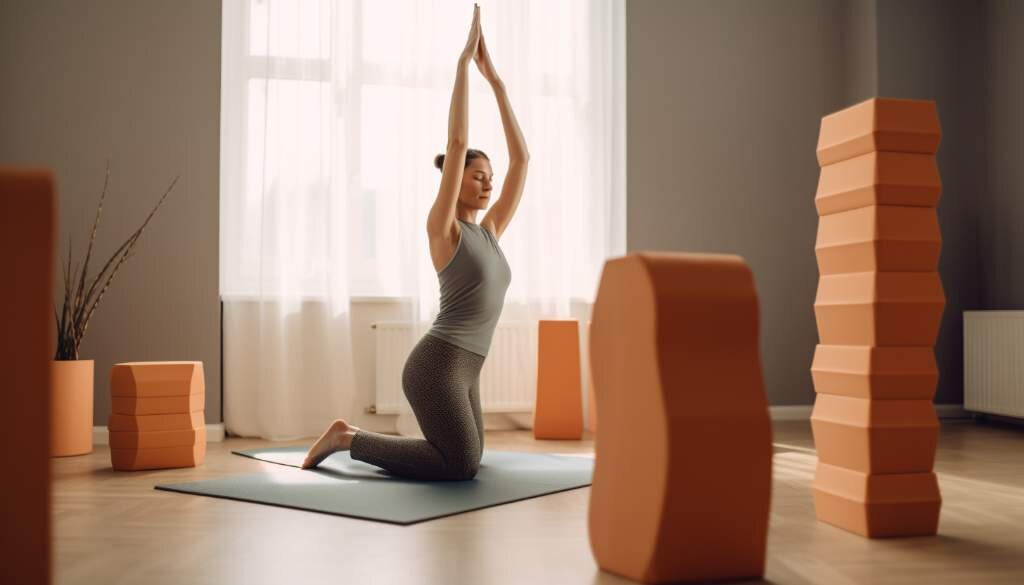
Safe Alternatives and Modifications
Safe alternatives and modifications are important considerations for individuals with osteoporosis who wish to practice yoga. These alternatives and modifications involve making adjustments to certain yoga poses to ensure they are safe and suitable for individuals with fragile bones. By tailoring the practice to their specific needs, individuals with osteoporosis can still experience the benefits of yoga without putting themselves at risk of fractures or injuries.
In this section, we will explore recommended yoga poses that are safe for individuals with osteoporosis. These poses are designed to strengthen bones, improve balance, and enhance overall flexibility and mobility. We will also discuss modifications for high-risk poses, which may pose a greater risk of falls or fractures for individuals with osteoporosis.
By understanding and implementing safe alternatives and modifications, individuals with osteoporosis can enjoy the physical and mental benefits of yoga while minimizing the risk of potential injuries. Let's explore the recommended yoga poses and modifications in the following subsections.
Recommended Yoga Poses
Recommended Yoga Poses
When practicing yoga with osteoporosis, it is important to focus on poses that help to strengthen the bones while minimizing the risk of fractures or injuries. Here are some recommended yoga poses:
- Tree Pose (Vrikshasana): This pose helps to improve balance and strengthen the legs, which can be beneficial for individuals with osteoporosis. Stand tall with your feet hip-width apart and shift your weight onto one leg. Place the sole of your opposite foot on the inner thigh or calf of your standing leg. Bring your hands to a prayer position at your chest or extend them overhead. Hold the pose for several breaths and then switch sides.
- Triangle Pose (Trikonasana): Triangle pose is a great way to build strength in the legs and core. Stand with your feet wide apart, facing forward. Turn your right foot out 90 degrees and your left foot in slightly. Extend your arms out to the sides at shoulder height. Keep your legs straight and bend from the waist to bring your right hand down to your shin, ankle, or the floor. Reach your left arm straight up towards the ceiling. Hold the pose for several breaths and then switch sides.
- Bridge Pose (Setu Bandhasana): Bridge pose strengthens the back, buttocks, and legs, making it a beneficial pose for individuals with osteoporosis. Lie on your back with your knees bent and feet flat on the floor, hip-width apart. Press your feet and arms into the floor and lift your hips up towards the ceiling. Keep your thighs and feet parallel. Hold the pose for several breaths and then slowly lower back down.
Modifications for High-Risk Poses
Modifying high-risk yoga poses is crucial for individuals with osteoporosis to ensure their safety and prevent any potential injuries or fractures. By making appropriate adjustments, people with osteoporosis can still enjoy the benefits of yoga while minimizing the risk of harm.
Here are some modifications for high-risk poses:
- Forward folds: Deep forward folds can put excessive pressure on the spine, increasing the risk of compression fractures. To modify this pose, bend the knees slightly or use props like a block to reduce the intensity of the forward fold. Keeping the spine straight and focusing on the lengthening of the upper body can help maintain proper alignment.
- Twists: Twisting poses can be challenging for individuals with weak bones. To modify twists, perform gentle twists rather than deep ones. Avoid any movements that involve excessive twisting or compressing the spine. Focus on gentle spinal rotations and use props, such as a bolster or blanket, to support the back and maintain a safe range of motion.
- Headstands and shoulder stands: Inversions like headstands and shoulder stands are usually not recommended for individuals with osteoporosis due to the risks of falling or cervical spine injuries. Instead, try safer alternatives such as supported legs-up-the-wall pose. This pose offers similar benefits by allowing the legs to be elevated without any pressure on the neck or spine.
- Deep backbends: Deep backbends like wheel pose or camel pose can be high-risk for people with osteoporosis. To modify these poses, practice gentler backbends such as bridge pose with the support of props like blocks or a bolster. By maintaining proper alignment and gradually increasing the intensity of the backbend over time, you can safely strengthen your back muscles without compromising the integrity of the spine.
Remember, it's essential to listen to your body and respect its limitations. If any pose feels uncomfortable or causes pain, it's best to avoid it or seek guidance from a qualified yoga instructor experienced in working with individuals with osteoporosis.
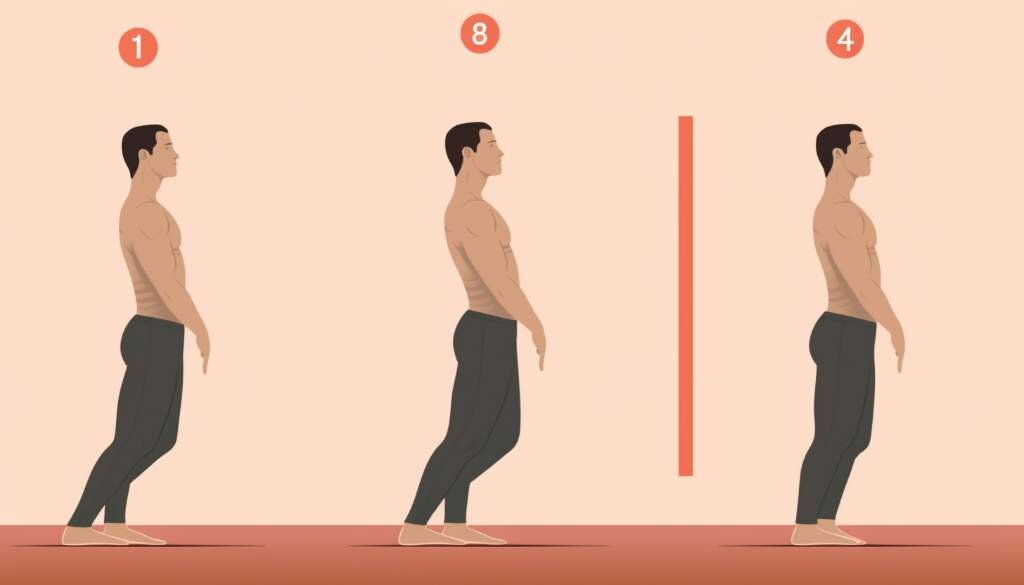
Precautions and Tips
Precautions and tips are essential when practicing yoga with osteoporosis to ensure safety and prevent any potential risks or injuries. Proper precautions and tips can help individuals with osteoporosis modify their yoga practice and gain the maximum benefits while minimizing the chances of fractures or other complications.
In this section, we will discuss important considerations for practicing yoga with osteoporosis and provide expert recommendations for safe practices. We will also explore modifications for high-risk poses to help individuals with osteoporosis adapt their practice with caution.
Important Considerations for Practicing Yoga with Osteoporosis
When practicing yoga with osteoporosis, it is important to take certain considerations and precautions to ensure safety and prevent any potential injuries. Here are some important factors to keep in mind:
- Consult with your healthcare provider: Before starting any new exercise program, including yoga, it is crucial to consult with your healthcare provider, especially if you have osteoporosis. They can provide personalized advice and guidance based on your specific condition and any limitations you may have.
- Avoid high-impact movements: Osteoporosis weakens the bones, making them more susceptible to fractures. It is essential to avoid any high-impact movements that put excessive stress on the bones, such as jumping or intense jumping poses. Instead, focus on low-impact exercises that prioritize stability and gentle movements.
- Modify poses according to your abilities: Not all yoga poses are suitable for individuals with osteoporosis. Some poses may put excessive pressure on the spine or increase the risk of falls. It is important to modify the poses according to your abilities and limitations. You can use props like blocks or straps for support and stability.
- Focus on balance and flexibility: Osteoporosis can affect posture and balance, increasing the risk of falls and fractures. Incorporate poses that improve balance and flexibility, such as tree pose, warrior III, and gentle backbends. These poses help strengthen the muscles surrounding the bones and improve overall stability.
- Avoid forward bends and twists: Certain yoga poses, like deep forward bends and twists, can place strain on the spine and increase the risk of compression fractures. It is advisable to avoid these poses or modify them by keeping the spine in a neutral position and using props for support.
- Practice under the guidance of a qualified instructor: If you have osteoporosis, it is beneficial to practice yoga under the guidance of a qualified yoga instructor who has experience working with individuals with similar conditions. They can provide proper modifications, ensure correct alignment, and help you avoid any risky movements.
- Listen to your body: Pay attention to your body's signals and limitations. If a pose causes pain or discomfort, modify or skip it altogether. It is important to prioritize your safety and well-being over pushing yourself too hard.
By following these important considerations, you can safely practice yoga with osteoporosis and enjoy the numerous benefits it offers, such as improved muscle strength, flexibility, and overall well-being.
Expert Recommendations for Safe Practices
When practicing yoga with osteoporosis, it is essential to follow expert recommendations to ensure safe practices. Here are some key tips to keep in mind:
- Consult with a healthcare professional: Before starting any new exercise regimen, including yoga, it is important to consult with a healthcare professional, such as a doctor or physical therapist, who can provide personalized advice based on your specific condition and needs.
- Choose a qualified instructor: Finding a qualified yoga instructor with experience working with individuals with osteoporosis is crucial. They will be able to modify poses and provide guidance on proper alignment and techniques to reduce the risk of fractures or injury.
- Practice gentle and low-impact yoga: Opt for gentle and low-impact forms of yoga, such as Hatha or Iyengar yoga, which focus on slow and controlled movements, proper alignment, and the use of props for support.
- Avoid high-impact movements and deep twists: High-impact movements, such as jumping or heavy bouncing, should be avoided as they can put excessive stress on the bones. Deep twists that involve torquing the spine should also be avoided as they can increase the risk of vertebral fractures.
- Use props and modifications: Props like blocks, blankets, and straps can be used to modify poses and provide additional support. They can help reduce the strain on the bones and joints, making yoga safer for individuals with osteoporosis.
- Maintain proper alignment: Keeping proper alignment during yoga poses is crucial to prevent injuries. Focus on maintaining a neutral spine, keeping the joints stacked, and engaging the core muscles for stability.
- Listen to your body: Pay attention to your body's signals and modify or skip poses that feel uncomfortable or cause pain. It is important to honor your limitations and avoid pushing yourself too far.
- Build strength gradually: Start with gentle poses and gradually increase the intensity and duration of your practice over time. This gradual progression allows the body to adapt and build strength safely.
By following these expert recommendations for safe practices, individuals with osteoporosis can safely reap the benefits of yoga while minimizing the risk of fractures and injuries.








